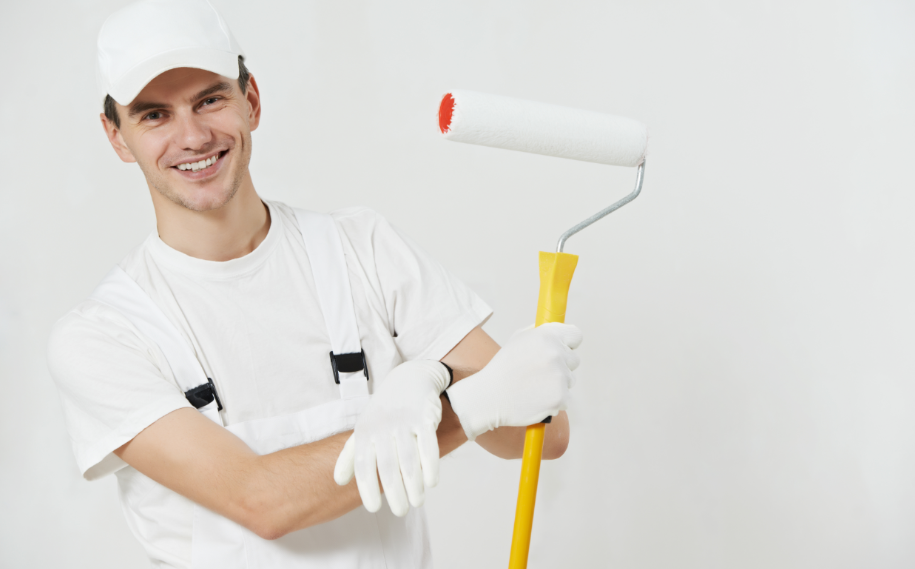
Common Painting Mistakes and How to Avoid Them
Embarking on a painting project can be a rewarding and therapeutic endeavor, whether you’re a seasoned artist or a DIY enthusiast. However, even the most experienced painters can fall victim to common mistakes that can compromise the quality of their work. In this article, we’ll explore some of these prevalent painting pitfalls and offer valuable tips on how to avoid them.
Skipping Surface Preparation:
One of the cardinal sins in painting is neglecting proper surface preparation. Failing to clean, sand, and prime surfaces before applying paint can lead to poor adhesion, uneven coverage, and premature peeling. Always invest time in preparing your canvas, walls, or furniture before picking up a paintbrush.
Tip: Thoroughly clean surfaces, repair any imperfections, and use high-quality primers to ensure a smooth and long-lasting finish.
Poor Color Choices:
Selecting the right color palette is crucial to the success of any painting contactor project. Many individuals make the mistake of choosing colors solely based on personal preference without considering factors like lighting, room size, and the overall aesthetic. This oversight can result in a finished product that feels jarring or overwhelming.
Tip: Test paint samples in small areas and consider how they interact with natural and artificial light. Additionally, explore color theory to understand the psychological impact of different hues.
Inadequate Mixing of Paint:
Inconsistent paint color is a common issue that arises from inadequate mixing. Whether using store-bought paint or mixing your own colors, failure to mix thoroughly can result in streaks and patches on the painted surface.
Tip: Stir paint well before and during application. If using multiple cans of the same color, mix them together to ensure color uniformity.
Ignoring Weather Conditions:
Outdoor painting requires careful consideration of weather conditions. Applying paint during extreme temperatures, high humidity, or in direct sunlight can lead to issues such as poor drying, bubbling, and uneven coverage.
Tip: Check the weather forecast and choose days with mild temperatures and low humidity for outdoor painting. Follow product guidelines for temperature and humidity ranges.
Overlooking Proper Ventilation:
Ventilation is often underestimated in indoor painting projects. Fumes from paint and solvents can be harmful when inhaled, leading to health issues. Ignoring proper ventilation can result in discomfort and even compromise indoor air quality.
Tip: Ensure adequate ventilation by opening windows and doors. Consider using low-VOC (volatile organic compound) or no-VOC paints to minimize fumes.
Rushing the Drying Process:
Impatience can be a painter’s worst enemy. Rushing the drying process by applying additional coats of paint before the previous one is fully dry can lead to smudging, streaking, and an uneven finish.
Tip: Follow the recommended drying times specified on paint cans. Use fans or open windows to expedite the drying process, but avoid compromising quality for speed.
Neglecting the Right Tools:
Using the wrong tools can lead to a multitude of painting problems. Cheap or inappropriate brushes and rollers can result in visible streaks, uneven coverage, and a generally unprofessional finish.
Tip: Invest in high-quality brushes and rollers suitable for your chosen paint type. Different surfaces may require specific tools, so choose wisely for a smoother application.
Inconsistent Brush Techniques:
Brush strokes can significantly impact the appearance of your paint job. Inconsistent techniques, such as applying too much pressure or using the wrong brush for the task, can lead to visible brush marks and an uneven surface.
Tip: Practice proper brush techniques, like feathering and crosshatching, to achieve a smooth finish. Choose the right brush size and type for the surface you’re painting.
Forgetting to Protect Surrounding Areas:
Accidental spills and splatters on floors, furniture, or adjacent surfaces are common mistakes during painting projects. Neglecting to protect these areas can lead to time-consuming cleanups and potential damage.
Tip: Use drop cloths to cover floors and furniture. Mask off areas with painter’s tape to create clean lines. Take the time to remove or cover hardware and fixtures.
Underestimating the Importance of Priming:
Some painters skip the priming step, thinking it’s unnecessary. However, primer serves crucial functions, such as improving adhesion, blocking stains, and ensuring a more even paint finish.
Tip: Always use a suitable primer before applying paint, especially on surfaces like raw wood or porous materials. It provides a stable base for the paint and enhances its longevity.
Overloading with Paint:
Applying too much paint in one coat may seem like a time-saving strategy, but it often results in drips, sagging, and an uneven finish. Thick layers can also take longer to dry properly.
Tip: Follow the recommended coverage guidelines on the paint can. Apply multiple thin coats, allowing each one to dry completely before adding the next layer.
Failure to Properly Clean Tools:
Neglecting to clean paintbrushes and rollers thoroughly can lead to dried, stiff bristles, rendering them ineffective for future use. It also compromises the quality of your paint job.
Contact Us Today:
Contact Best Anchorage Painters for flawless painting services! Embark on your project without common mistakes. Prioritize surface preparation, choose colors wisely, and ensure thorough paint mixing. Consider weather conditions for outdoor projects and prioritize proper ventilation indoors. Be patient during drying, invest in quality tools, and master brush techniques. Protect surrounding areas, never skip priming, and avoid overloading with paint. Finally, clean tools diligently. With our expertise, your project will shine. Contact us today for top-notch painting services that guarantee a professional and long-lasting finish!
Conclusion:
Avoiding common painting mistakes requires a combination of patience, careful planning, and attention to detail. By addressing surface preparation, color choices, proper mixing, weather considerations, ventilation, and drying times, you can significantly improve the outcome of your painting projects. Remember, a well-executed painting job not only enhances the aesthetics of your space but also contributes to the longevity and durability of the painted surfaces.



